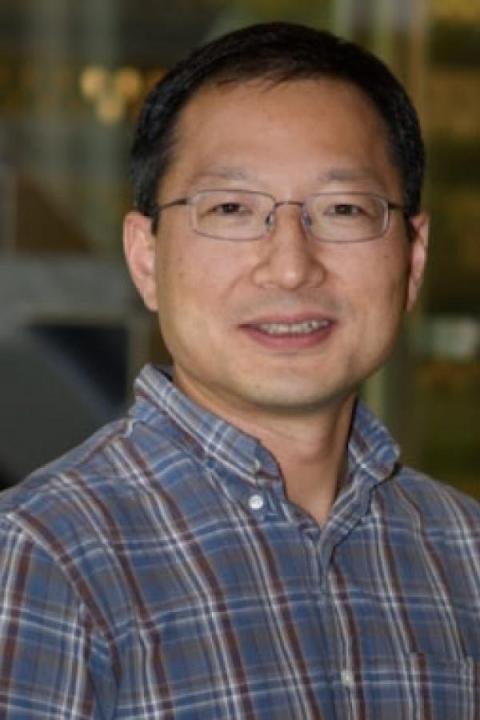
Ningyu Liu
I enjoy working with researchers of diverse background, expertise, and experience. My undergraduate and graduate students have won numerous awards at scientific meetings and have also received university Outstanding Student Award. If you are interested in learning our research or joining our group, please feel free to contact me.
Courses Taught
- PHYS 508: Thermodynamics&Statistic Mech
- PHYS 602: Computational Physics Recit II
- PHYS 703: Electricity and Magnetism I
- PHYS 704: Electricity and Magnetism II
- PHYS 797: Senior Design Project
- PHYS 941: Electromagnetic Theory I
- PHYS 999: Doctoral Research
Education
- Ph.D., Electrical&Electronic Eng. Tec, Pennsylvania State University
- M.S., Electrical Engineering, Zhejiang University
- B.S., Electrical Engineering, Zhejiang University
Research Interests
- Electromagnetics
- High Performance Computing
- Numerical Analysis
- Numerical Models
- Plasma Electronics
- Plasma Physics
- Radio
- Remote Sensing
- Space Sciences
Selected Publications
Scholten, O., Lourens, M., Buitink, S., Cummer, S., Dwyer, J., Hare, B. M., . . . Ter Veen, S. (2025). Measuring location and properties of very high frequency sources emitted from an aircraft flying through high clouds.. Nat Commun, 16(1), 10572. doi:10.1038/s41467-025-65667-2
Boggs, L. D., Mach, D., Bruning, E., Liu, N., van der Velde, O. A., Montanya, J., . . . Peterson, M. (2022). Upward propagation of gigantic jets revealed by 3D radio and optical mapping. SCIENCE ADVANCES, 8(31). doi:10.1126/sciadv.abl8731
Liu, N., Scholten, O., Dwyer, J. R., Hare, B. M., Sterpka, C. F., Tilles, J. N., & Lind, F. D. (2022). Implications of Multiple Corona Bursts in Lightning Processes for Radio Frequency Interferometer Observations. GEOPHYSICAL RESEARCH LETTERS, 49(7). doi:10.1029/2021GL097367
Liu, N. Y., Scholten, O., Hare, B. M., Dwyer, J. R., Sterpka, C. F., Kolmasova, I., & Santolik, O. (2022). LOFAR Observations of Lightning Initial Breakdown Pulses. GEOPHYSICAL RESEARCH LETTERS, 49(6). doi:10.1029/2022GL098073
Scholten, O., Hare, B. M., Dwyer, J., Liu, N., Sterpka, C., Kolmasova, I., . . . ter Veen, S. (2022). Interferometric imaging of intensely radiating negative leaders. PHYSICAL REVIEW D, 105(6). doi:10.1103/PhysRevD.105.062007
Liu, N., Kosar, B., Sadighi, S., Dwyer, J. R., & Rassoul, H. K. (2012). Formation of Streamer Discharges from an Isolated Ionization Column at Subbreakdown Conditions. PHYSICAL REVIEW LETTERS, 109(2). doi:10.1103/PhysRevLett.109.025002
Bourdon, A., Pasko, V. P., Liu, N. Y., Célestin, S., Ségur, P., & Marode, E. (2007). Efficient models for photoionization produced by non-thermal gas discharges in air based on radiative transfer and the Helmholtz equations. Plasma Sources Science and Technology, 16(3), 656. doi:10.1088/0963-0252/16/3/026
Liu, N., & Pasko, V. P. (2006). Effects of photoionization on similarity properties of streamers at various pressures in air. Journal of Physics D, 39(2), 327. doi:10.1088/0022-3727/39/2/013
Moss, G. D., Pasko, V. P., Liu, N., & Veronis, G. (2006). Monte Carlo model for analysis of thermal runaway electrons in streamer tips in transient luminous events and streamer zones of lightning leaders. Journal of Geophysical Research, 111(A2). doi:10.1029/2005ja011350
Liu, N., & Pasko, V. P. (2004). Effects of photoionization on propagation and branching of positive and negative streamers in sprites. Journal of Geophysical Research, 109(A4). doi:10.1029/2003ja010064